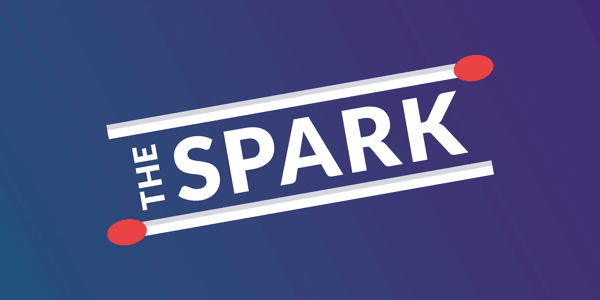Tale as Old as TimelineRemember scrolling through Instagram until you finally hit the posts from the day before? Well, like all great trends, the chronological timeline is making a comeback! Back in 2016, Instagram switched to an engagement-based ranking system, and ever since then, marketers everywhere have been chasing the elusive algorithm.
Many users are frustrated with the content Instagram deems more relevant, as it often features clickbait-y articles or shows outdated, days-old posts. As marketers know all too well, it can be hard to promote time-sensitive campaigns or events when you can't be sure when your audience will see them. So if you feel like your business account has gotten lost in the murky waters of the algorithm, this update could be a game-changer.
As part of this rollout, Meta announced Instagram’s two new timeline sorting options: Favorites and Following, both in chronological order. Favorites will show the latest from accounts you choose, like your close friends and favorite content creators. Following will show you all the accounts you follow, allowing you to quickly catch up on the most recent content.
But the algorithm isn’t going away, so don’t throw your user engagement strategies out yet! The chronological timeline isn’t automatic, and will need to be applied every time you want to view your feed in that order. But now is a good time to review the best times to post on Instagram. The next time you log onto the platform, check out the new sorting features — and be sure to add Tier One Partners to your Favorites list! 😉
The Case of Scroll vs. SubscribeVideo content is ever-evolving, and the latest report from Deloitte proves it. Its 2022 digital media trends report reveals unexpected shifts in digital behavior across the world — including a push toward social video that could give streaming services a run for their money.
Deloitte’s insights show that we can no longer assume that SVOD (subscription video on demand) is the first video platform people turn to for entertainment. For instance, social media platforms are increasingly dynamic spaces within which people can connect with each other and stay entertained.
User-generated content (UGC) dominates the type of video consumed on social media. Forty-one percent of U.S. consumers spend more time watching user-generated video content online than they do watching TV shows and movies via streaming services. (We had to read that one twice, too.) The trend goes hand in hand with Deloitte’s overall analysis of social media videos, which are primarily “bite sized, snackable, and highly personalized.” People can log on to be entertained for minutes — or hours — because social algorithms are designed to learn and cater toward your preferences. And, as opposed to streaming services, most major social platforms are completely free. Endless entertainment for no monthly fee? Netflix better watch out.
Take advantage of the ways you can leverage social video to create more personalized and engaging brand interactions. And, as UGC continues to take over our feeds, start conversations with your audience that encourage user-driven responses on social media.
TL;DR: Deloitte’s latest digital trends report reveals that social video is catching up with subscription streaming in the competition for people’s attention. Prioritize participatory and user-generated content in your social video strategy to drive meaningful audience interactions.
What Lit Us UpShe Shoots, She Scores (a Fraction of the Media Coverage)In conjunction with Women's History Month, March Madness, and the 50th anniversary of Title IX, Buick launched See Her Greatness to showcase the greatest moments in women’s collegiate sports. This multi-platform campaign, which centers around a content rich microsite, spans YouTube, televisions ads, and social media using #SeeHerGreatness. And while we've seen many brands, both big and small, speak in support of women this March, Buick utilizes a brilliant, creative, and smart content mix to stand out from the rest.
Imagine: You’re watching a March Madness game when during a commercial break, an amazing sports achievement plays, but the screen is black. You hear only the audio of the moment and see just a few lines of plain text and a small QR code in the corner. This poignant lack of visuals highlights the disparity in men's and women's sports, emphasizing to the viewer (or rather, listener) that women's achievements are widely overlooked, not because they are any less spectacular, but because they are performed by a woman.
Buick’s campaign points out that while 40% of athletes are female, they receive about 10% of all media coverage. This means roughly nine out of every 10 cameras are pointed at a male athlete. Buick is making a commitment to their large female customer base by placing an equal number of ads in the Men’s and Women’s NCAA Tournaments.
As a part of the See Her Greatness campaign, Buick partnered with TOGETHXR, a media and commerce company founded by renowned female athletes Sue Bird, Chloe Kim, Alex Morgan, and Simone Manuel, to host Buick Huddles, where fans can further connect with female NCAA athletes through live interviews, Q&A sessions, and more on Buick’s See Her Greatness microsite.
Buick's clever campaign sends a powerful message by capitalizing on the power of audio to drive home the inequity between women's and men's athletics. As you create your next campaign, consider how you can use a conventional medium in an unconventional way to catch your audience's attention. And remember, sometimes less is more, and what you choose to intentionally leave out can be just as impactful as what you put in.
TL;DR: While women make up 40% of athletes, they only receive roughly 10% of the media attention. Buick’s latest ad campaign utilizes audio to great success to try and change that. (Was this email forwarded to you? Sign up here.)
|
-1.png?upscale=true&width=346&upscale=true&name=Tier%20One%20logo_color%20(1)-1.png)


